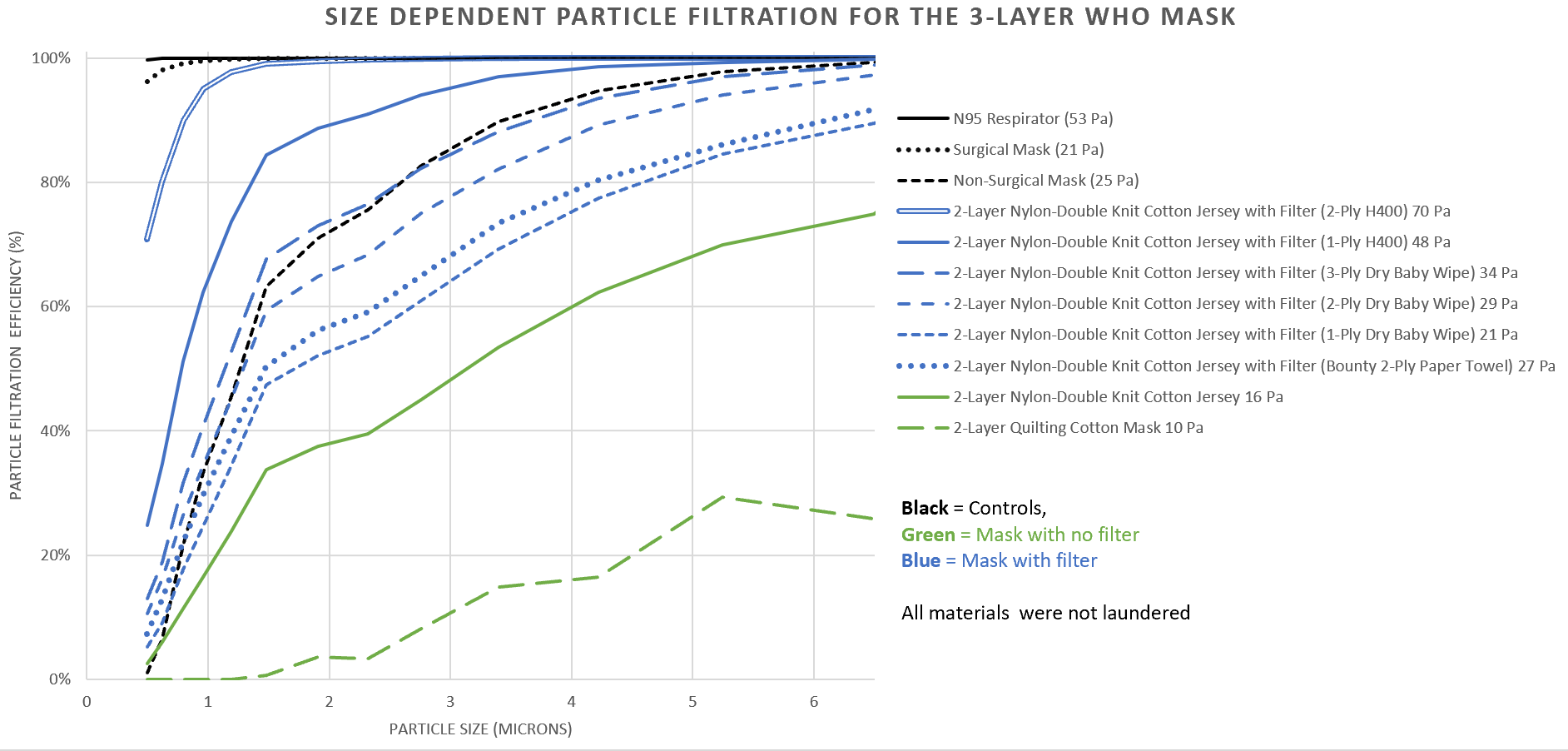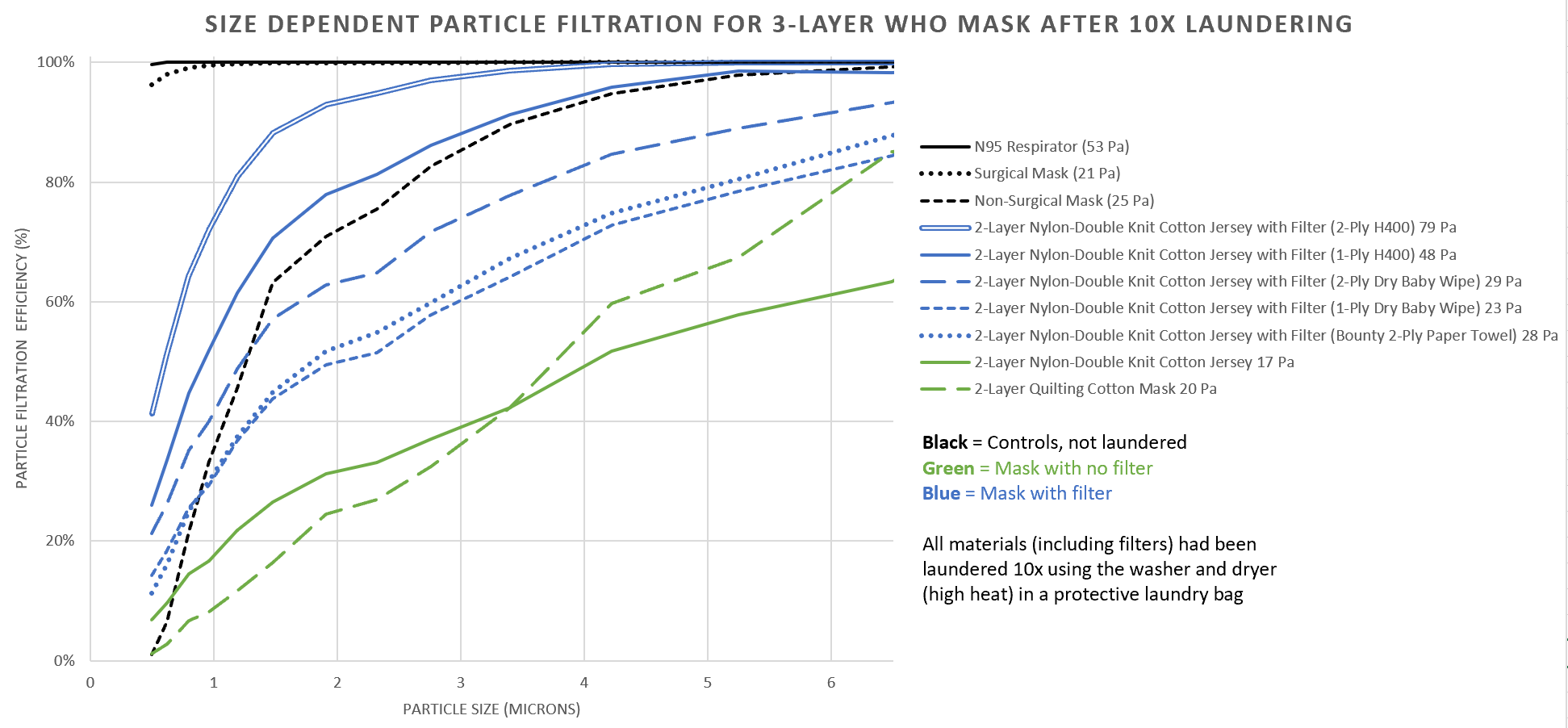
In June 2020, the World Health Organization (WHO) published interim guidance on fabric mask use during the COVID-19 pandemic. The agency recommended a 3-layer approach to mask construction based on the best available evidence from their analysis of available research.
- Innermost layer: hydrophilic or water-loving
- easily absorb moisture from the wearer to maintain comfort for the wearer
- examples: cotton, silk, rayon
- Filter layer:
- enhance filtration to capture respiratory droplets
- examples: Bounty paper towel, Huggies dried baby wipes, Halyard H100-400 sterilization wrapping
- Outermost layer: hydrophobic or water-resistant
- limit external contamination
- prevent the penetration of respiratory droplets to the face
- examples: nylon, polyester, polyester cotton, Halyard sterilization wrapping
Based on these recommendations, we collaborated with the UBC Aerosol Lab to test a number of common fabric and filter materials. We used single-layer filtration (particle filtration efficiency of NaCl aerosols with aerodynamic sizes of 0.5-6microns) and breathability (Pressure drop, Pa) data, measured at a flow rate of 30L/min (equivalent to normal-moderate work of breathing), to estimate the filtration performance and breathability of mask combinations that fulfilled the WHO criteria, before and after laundering.
Our 3-layer WHO mask combination:
- Outermost layer: knit nylon spandex
- Filter layer: Bounty paper towel, Huggies dried baby wipes, Halyard H100-400 sterilization wrapping
- Innermost layer: double knit cotton jersey

- The use of 3-ply dried baby wipes or 1-2 ply H400 halyard sterilization wrapping as filters allowed the reusable homemade WHO mask to be as good or better than a commercial non-surgical mask.
- Without a filtering layer, the 2-layer WHO mask did not perform as well as a 2-layer quilting cotton mask for particle filtration